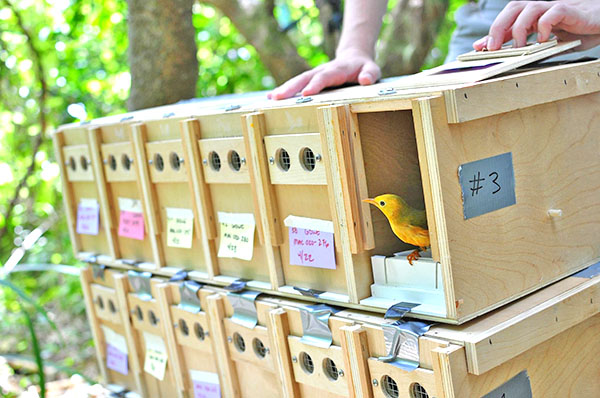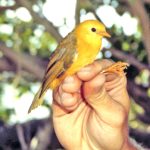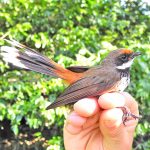Learn about the life of birds in the Marianas

Scientists from the Marianas Avifauna Conservation Project will be talking about the life of birds in the Marianas and how to help conserve them.
(Paul Radley/CNMI DFW)
This Thursday, April 25, scientists from the Marianas Avifauna Conservation Project will be talking about the life of birds in the Marianas and how to help conserve them.
Hosted by the Asia-Pacific Academy of Sciences, Science Education, and Environmental Management and in cooperation with the CNMI Division of Fish and Wildlife, the presentation by visiting MAC group scientists at the American Memorial Park auditorium will start at 5pm.
The division—an office within the Department of Lands and Natural Resources—started the MAC Project in 2004.
It is intended to provide the birdlife of the Marianas archipelago with the best possible chances for long-term survival, with the objectives of preserving, maintaining, and establishing self-sustaining populations of native birds secure from the threat of the brown tree snake.
To address this threat, the division has asked institutions within the Association of Zoos and Aquariums community for assistance with long-term conservation efforts aimed at protecting native avifauna on Saipan, Tinian, and Rota.
In Thursday’s talk, APASEEM and the MAC group are partnering with the American Memorial Park for a public discussion regarding the uniqueness of the birdlife in the CNMI and to share the work that is being done here by the MAC Project.
The mid-1980s saw the brown tree snake either extirpate or drive to extinction nine of 12 species of forest bird in Guam. Almost 20 years later the U.S. Department of the Interior determined that Saipan may support an “incipient” population of this invasive predator.
In 2005, DFW, the U.S. Fish and Wildlife Service, and the AZA determined that preemptive action was necessary for the CNMI’s birdlife to avoid the fate that befell Guam. That’s how the MAC Project came to be.
The MAC Project’s endeavors are two-fold:
1) the maintenance of captive populations (which serve as genetic reserves) of the CNMI’s native and endemic forest bird species at AZA-affiliated institutions in the U.S. mainland; and
2) the establishment of satellite populations of these bird species on islands in the Mariana archipelago that are deemed safe from brown tree snakes.
Captive breeding programs at participating zoos in the U.S. mainland have thus far experienced success with the Mariana fruit dove, the white-throated ground dove, and the golden white-eye.
Also, satellite populations of bridled white-eyes, golden white-eyes, and Mariana fruit doves have successfully been established on Sarigan.
In both endeavors, however, there is more work ahead of the MAC Project.
Dr. Deidre Fontenot and Hannah Bailey, representing the MAC Project group, will provide an update on the program’s successes and challenges.
Like all APASEEM gatherings, everyone is invited to attend and ask questions. Additional program information is available by visiting the Facebook page: https://www.facebook.com/PacificBirdConservation.
For more information about APASEEM, visit our website at http://www.apaseem.org. (PR)
- In 2005, the Division of Fish and Wildlife, the U.S. Fish and Wildlife Service, and the Association of Zoos and Aquariums determined that preemptive action was necessary for the CNMI’s birdlife to avoid the fate that befell Guam. (Contributed Photo)
- In 2005, the Division of Fish and Wildlife, the U.S. Fish and Wildlife Service, and the Association of Zoos and Aquariums determined that preemptive action was necessary for the CNMI’s birdlife to avoid the fate that befell Guam. (Contributed Photo)





























